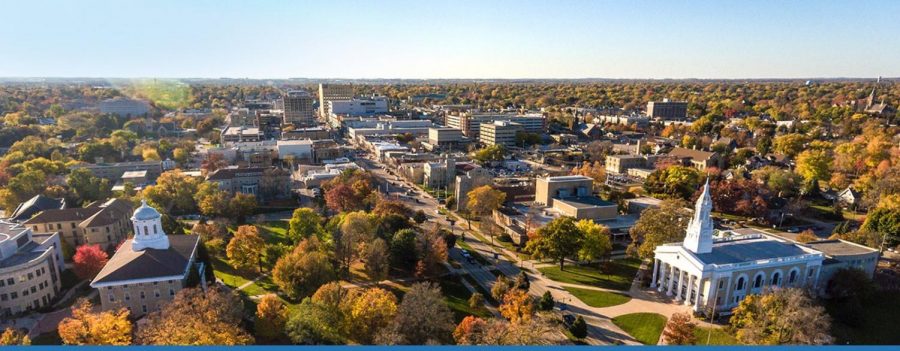COVID and college searches: how students are adapting
The COVID-19 pandemic is reshaping the very foundation of college searching
lawrence.edu
Lawrence University in Appleton Wi. continues to host tours to prospective students during the pandemic
While there are still a few students touring their schools in-person, in the age of COVID-19, most are finding new ways to visit their top choice schools; whether it’s over Zoom seminars or virtual 360 degree tours.
While some students are taking a look at their top choice schools virtually, others are going the extra mile to set foot on college campuses to get a glimpse of their possible futures there.
Amelia Senior, for instance, recently toured Lawrence University, a small liberal arts college in Appleton, Wis.
“Lawrence was very pragmatic when it came to COVID-19,” Senior said. “There was plenty of social distancing and masks were mandated throughout the whole tour, and even the students who didn’t wear masks on campus weren’t near anyone else.”
Senior will continue her in-person college venture sometime in October at colleges like Kalamazoo in Michigan and Wooster in Ohio; while other students plan to continue their search virtually.
Among the students going virtual on their college search is senior Max Russo, who recently toured Georgetown University, Colgate College, and Columbia University to name a few.
“I don’t really think I’ve gained more information about the colleges on my virtual tours than on any physical ones,” Russo said. “The information they gave me during the seminars and tours was useful, and learning the traditions of each college I toured made the experience more enjoyable. However, there’s something endearing about listening to things like the personal anecdotes of the tour guide.”
Russo does not plan to tour in person for the foreseeable future, primarily for lack of tour availability for multiple colleges, since many colleges have tours at limited capacity or are not allowing them at all for safety reasons.
Typically, Zoom seminars operate the same way that a formal college presentation would work. A representative from the school shares a presentation detailing key points like the application process, the student life, the graduation rate, and much more.
Virtual tours, on the other hand, are much more self-explanatory. They’re usually found on the college’s website, and they can either be a 360 degree tour (in which a person has a panoramic view of the campus while a background voice explains what this particular part of the campus is like) or a video tour (where a tour guide explains the different aspects of students life while visiting several key points of campus).
Post-High School Counselor Thomas Shorrock has been deeply involved in helping seniors with their college search as part of New Trier’s PHSC for the past 15 years, and this year was certainly different for him.
“I’ve talked to a lot of students who have toured colleges over the summer unofficially, they were careful about their journeys and wore masks the entire time,” said Shorrock “Even though COVID is only a temporary setback, I think students should absolutely factor in a college’s response to the pandemic for their college choices. It signals to them that the school cares about its students, staff, and community.”
Not all colleges, however, have been quite as lucky with their approach to COVID-19. More than 61,000 new cases have been traced to college campuses all across the nation.
While some college campuses have responded by switching to all remote learning for the rest of their fall semesters, schools like the University of Alabama have continued with in-person classes.
Also, after Notre Dame opened classes in person for their 12,000 students, cases soared within eight days of their semester and classes were moved completely online for two weeks.
Even though the campus cases have only resulted in around 60 deaths and small numbers of hospitalizations, a New York Times review found that 203 “college towns” where college students made up approximately 10% of their population had their worst periods of the pandemic after in-person classes resumed in August.








































